What is the foundation of all effective marketing?
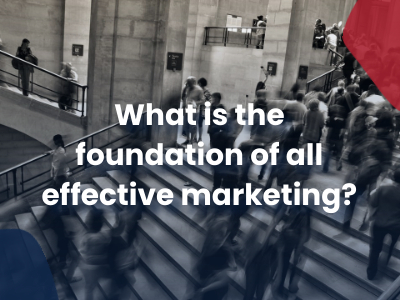
Most people’s favorite part of building a marketing campaign are the visuals. While how your marketing looks is important, who you are sending it to, and how you are sending it should be the first step with any marketing. Those two things inform everyone’s favorite part of marketing: results.
It’s like a luxury car…looks beautiful and sure makes an impression, but if there’s no gas in the tank, it won’t go anywhere. Going (hopefully fast) is the goal!
So, how do you know what the best fuel is for your marketing campaign?
The right fuel is determined by who your audience is, what your campaign objectives are, and the best ways to reach your audience.
Which comes back to the two most common questions we get asked:
- What data do I need for marketing?
- How do I reach my customers?
What data do I need for marketing?
Really the first question is: what data is available? Viant had a great illustration about the different types of marketing data.

Data Types (Explained with Cows)
First-Party Data
You own a cow. You know the cow’s name, what it eats and where it sleeps. These are your customers; you have their contact information in your CRM. They know you have their information.
Second-Party Data

You rent some cows from a friend for a fee but you don’t necessarily know the cow’s name, what it eats, or where it sleeps. You have to pay your friend each time you need some milk. Second-party data is first-party data sold to another company for a specific use. For example, say you own a company and you looking to expand into a new market. You can buy a list of first-party customer data from a company in the new market you are tapping into and market to them for an agreed-upon number of times. However, with the increased privacy and data laws using second-party data can sometimes be problematic.
Third-Party Data
There’s a village full of cows that were bought, rented, or found. The cows with similar traits are herded together and sold to you. You don’t know where the cows came from or sometimes if this is even a real cow. Traditional list data and many digital audiences call into this category. Which is one reason it’s so important to get data from a good source! You need to be able to trust that you aren’t buying fake cows or ones that don’t match the traits you need. Another thing to remember about 3rd party data is that it is the most impacted by the cookie and privacy laws! Relying too much on traditional 3rd party data can set you up for failure in the future.

Looking into the future with post cookie advertising, traditional 2nd and 3rd party data channels are going to change. The ways to gather consumer data have already changed in a lot of ways. For example, Connected TV doesn’t support cookies and instead relies on IP targeting. This is data you can use for marketing but doesn’t have the same types of information you would get with traditional list data. You are going to get demographic data and location data but probably not names or a specific address. Using IP targeting is a great way to maintain your same flow of data-driven campaigns while still working within updated privacy laws.
This is often called people-based data. When you use people-based data you know you are reaching real people in real households.
What data do you actually need?
The data you need is based on two things: What do you know about the people you are trying to reach? What is your goal with this campaign? What you know about who you are trying to reach impacts your demographics and helps informs decisions about methods and channels. Your campaign goal also helps you figure out what channels to use as well as campaign scale and message.
Questions you can ask to help learn about your customers:
- What are their basic demographics?
What gender to they identify as? How old are they? Where do they live? What is their relationship status? Are they educated? - What do they do for work?
What’s their job title and description? But more than that, are they a decision maker? What do they influence at work? - What are their interests?
Do they have hobbies or interests? What do they do in their free time? Are they part of a community? - What do they want and why can’t they have?
This a big thing for figuring out what you can do to help them! What are their goals and dreams? What are their pain points? Like, what keeps them up at night? - Why wouldn’t they buy from you?
What’s stopping them from buying from you? What objections may they have? - What ways would they prefer to interact with you?
Do they use social media? Do like a particular social media? Is a phone call the best way to reach them?
Learning about your customers and the best way to communicate with them is the foundation of effective marketing! Effective marketing = results!
Data, Analytics, and Insight: What’s The Difference?

Data, analytics, and insight is kinda our thing. However, it seems like a lot of people use those words almost interchangeably. Are they the same thing? What do they mean for your business?
Data = The Information
Analytics = The Connections
Insights = The Actions
Data is pure information. For example, data about your current customers (first party data) is information such as average age, gender, location, or occupation. Analytics are the patterns that connect those things.
That would mean that data is knowing that you sent over 20,000 emails in June 2021. Analytics are knowing that your average open rate is 22.8% and your click through rate is 0.09%. The analytics show you a clearer image of the data.

I heard a really great illustration about this recently. Thinking about data and analytics can be compared to looking at an impression painting (like this one: The Cliff of Aval Etretat by Claude Monet.) Up close, all you see are the brush strokes and colors. That’s like looking at raw data. You can see what it is made off. But if you back up a few feet and look at the painting, you can see what the image actually is. Similarly, looking at analytics gives a more complete view of your data.
What’s the advantage of Insight?

Insight is the action connected to the analytics. Taking the example of 20,000 emails, insight would taking the knowledge that you have a great open rate but a terrible CTR and doing something about it. Applying insight means changing your call to actions or link to generate a better click through rate.
What’s another way to apply insights?
Building a Buyer Persona
What is a buyer persona? In the simplest terms, a buyer persona is exemplification of all of your customers. The most common way to do this is to create a fictional person that has the most common demographics and interests of your customers. Basically, you take data, analyize it, and then use insight to act.
Ask yourself: What are your customers common denominators? (Data) What do they want? (Analytics) What are their pain points? (Analytics) Once you have this information, it can be combined into a person you can picture makes it easier to connect with the crowd. (Insights)
Jim Edwards from Funnel Scripts explains buyer personas as the main character in the story of your company’s customer journey. Although your company already has its own personality, (or brand) in order to success the narrative you’re telling haws to focus on what the customer wants and needs. You are there to help them get to where they want to go. Jim Edwards example buyer persona was for a weight loss company. Their buyer persona is a middle-aged unicorn named Fred who needs to lose weight if he wants to be successful at his quests. Fred is the main character in the story. The weight-loss company is there to help him.
What data do you need to create a buyer persona?
Like any good main character, your buyer persona needs to be well rounded. It needs to have a purpose, interests, goals, and struggles. It’s especially important to know what motivates them so you can help them.
Here’s some common buyer persona attributes.
- What are their basic demographics?
What gender to they identify as? How old are they? Where do they live? What is their relationship status? Are they educated? - What do they do for work?
What’s their job title and description? But more than that, are they a decision maker? What do they influence at work? - What are their interests?
Do they have hobbies or interests? What do they do in their free time? Are they part of a community? - What do they want and why can’t they have?
This a big thing for figuring out what you can do to help them! What are their goals and dreams? What are their pain points? Like, what keeps them up at night? - Why wouldn’t they buy from you?
What’s stopping them from buying from you? What objections may they have? - What ways would they prefer to interact with you?
Do they use social media? Do like a particular social media? Is a phone call the best way to reach them?
Using data, analytics, and insight is essential to having a successful business. What ways to you implement data in your business?
How A Lookalike Report Helps You Increase Sales
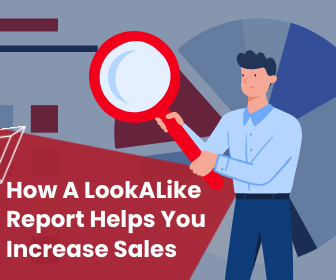
LookALike audiences have been a go-to targeting tool for almost a decade. Even before digital marketing, marketers used current audience demographics to target potential customers. With a growing number of AI tools available, businesses of all sizes have access to LookALike targeting. How can you use a LookALike Report to increase sales?
What is a LookALike Report?
Pioneered by Facebook in 2013, a LookALike report uses common attributes and demographics of your current audience to find more customers who “look like” them. These attributes can be anything from age and location to interests and hobbies. The more commonalities between your audience the more accurate your LookALike report will be.
Although originally only a tool on social media, LookALike reports are now available on many different types of platforms. For example, we often build LookALike reports with raw CRM data.
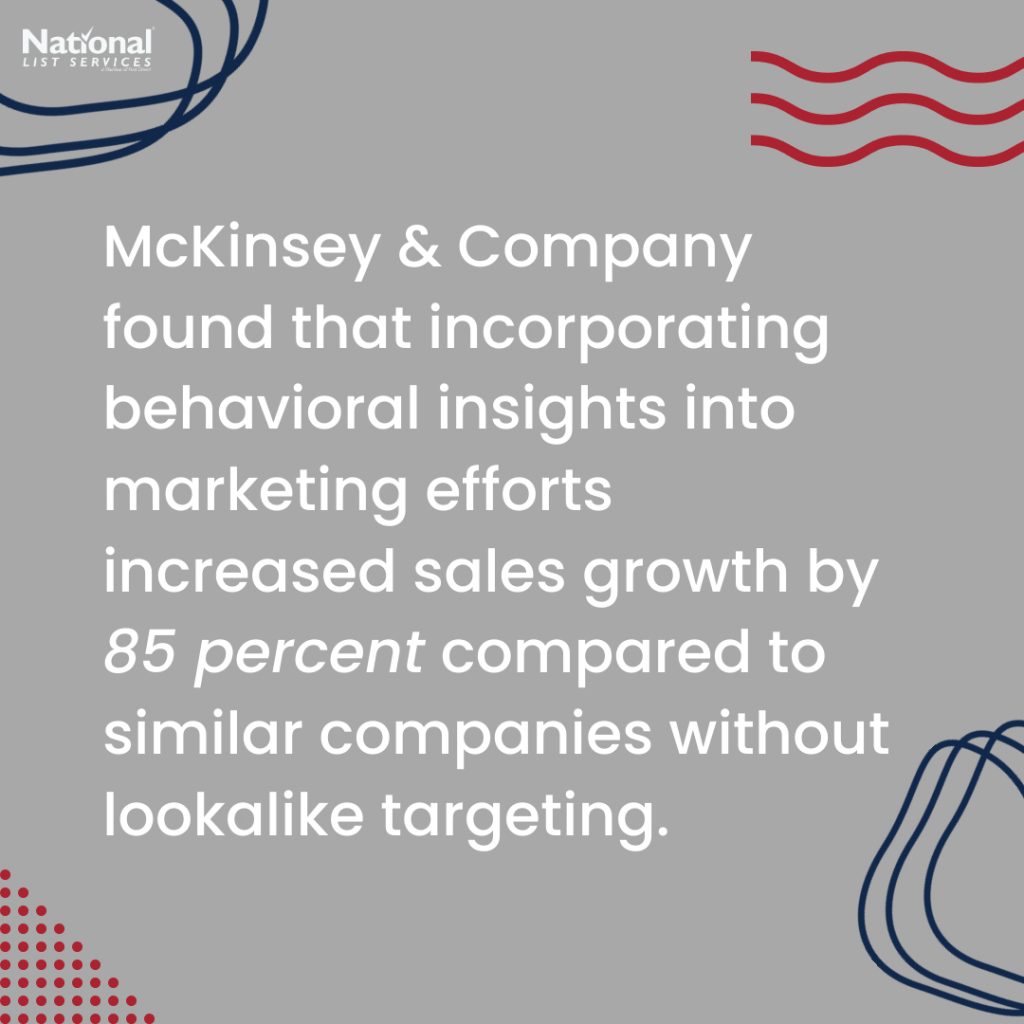
How to Maximize Your Report to Increase Sales
As great as it would be to dump all your current audience information into a LookALike report and get back a list of new customers, it usually takes a more finesse than that. Here’s 5 tips and tricks to take out some of the guess work.
#1 Define Your Audience
The goals of LookALike reports can be different so it’s important to start with the right data seeds or source audience. Since LookALike reports are based on the data you input, it really important that the data you start out with is accurate and will accomplish what you want. For example, do you want to find new customers that are like all your customers or like your best current customers?
The amount of data you can use to start with varies greatly. Facebook recommends anywhere between 1,000 and 50,000 people. Although they do say that starting with “a larger audience increases your potential reach but reduces the level of similarity between the Lookalike Audience and source audience.” Those differences between your source data and LookALike audience could be the difference between a sale or not.
Where can you get source data? Here’s three different source audiences:

- CRM Data
Seeds defined by existing CRM data match lookalike audiences with information gathered from existing customers, such as email, physical addresses, and phone numbers. However, this data is usually too broad and needs to be narrowed down to create an accurate base for a LookALike report.
- Social Media Engagement Data
Data from social media audience can also be used as a seed that a LookALike report is based on. This data is usually based on characteristics like page views and likes.
- Conversion Data
Source data based on conversion data are usually your “best customer” seeds. These are customers who have already competed and action with your business.
#2 Get Used to Segmenting Your Data
Building out your LookALike report will be a lot easier when you have a specific product or audience segment in mind. Knowing what you want to use this new audience data for will help you pick the right demographics to target. This is where audience segmenting comes in. Finding the right demographics will be easier if you already have your audience data organized or tagged by demographics.

#3 Connect Your LookALike Goals to Your Marketing Goals
Targeting using a LookALike audience can give you a higher ROI and help you reach your marketing targets. For example, if your company has found that you get higher engagements on mobile devices, you can build a LookALike report from those people. By targeting those people, you can direct your marketing efforts towards the audience most likely to help you reach your goals.
#4 Target and Retarget and Retarget
Targeting the right audience is effective, retargeting adds even more. Using a LookALike audience in a retargeting campaign adds to specific information gathered in the initial campaign. And since retargeting uses a lot of the same principles as building a LookALike audience, they go hand in hand.
#5 Switch Up Your Platforms
Facebook isn’t the only platform that supports LookALike reports. Many online platforms have LookALike audience builders built in. Switch up your platform to test new audiences and ways of reaching them. And as we mentioned earlier, we often use raw CRM data to build a LookALike report within our list system. The data we get from those reports can be used for any type of marketing.
Have you ever used a LookALike Report?
What Tasks Should You Delegate To Other Businesses?
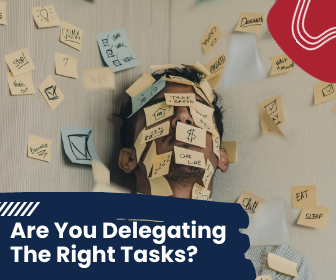
Our podcast, BeGrowthDriven, this week was all about things that are valuable to delegate to other businesses. Here the 5 things that we (and our guest Joe Camacho) found to be at the top of the delegation list!
Why Delegation?
We aren’t talking about just task delegation here. The delegation we are talking about is bigger than that. It can be easy an entrepreneur to try and wear all the hats yourself. We get that. However, there’s a lot of things that aren’t, uh, necessarily in your wheelhouse that can suck up a lot of time and effort. Delegation or farming out those tasks can free up your time so you can focus on the things you need to do to grow your business.

A lot of people hesitate to delegate some of these tasks because they think that if take care of it themselves, it will save money. That’s not always true. Sometimes short-term saving has long term costs.
Obviously, every company has different specialties so the tasks that need delegating will be different. However, these 5 are things that often fall into the category of thing that small companies try to do themselves and then up regretting it later.
#1 All the IT stuff
In this digital age, some IT services are a requirement. If you don’t know how to set up behind the scenes of a website or cloud services, it can be very time consuming (and expensive) to learn. There are so many companies and entrepreneurs who focus on IT services and management. They can help! Having it don’t right in the beginning will make it easier for the future.
#2 Compliance
Every year more and more regulations are added to the internet. Regulations about data usage, cookies, accessibility, etc. There are even more regulations if you are in specifics fields such as the medical and health industry. If you break a rule you didn’t even know was there can have serious consequences! Delegating compliance services to a specialist makes sure you don’t have any nasty surprises down the road.
#3 Branding
Branding is more than just a logo. It’s the entire outward facing personality of your brand! It can be difficult to look at your brand objectively, which is one of the reasons while delegating branding is a good idea! A graphic designer or branding agency knows the right questions to ask to help you figure out who your brand is. And they know all the technical things that need to happen to make sure your branding has the pieces you need to grow your business.

#4 Web Design
There are soooooo many free (or cheap) web design tools out there and honestly, some of them are really great! However, designing a website can be a lot more complicated than it appears. There’s a lot of technical aspects behind the scenes. Things like DNS and Domain Hosting are time consuming to learn how to set properly. Web design can be overwhelming and frustrating if it’s out of your element and might be worth delegating.
#5 Digital Advertising
Digital advertising is a massive field. There’s digital display, and programmatic adverting, and social media. There are entire agencies that do only Facebook ads! It can be difficult to know where to begin with online advertising: What software should you use? What’s the right channels for your business? What creative will work best? How much money should you invest? Where should you send the traffic you acquire? Delegating your digital ads will help you make money!
Some of these tasks we do for clients but others we delegate out ourselves! The key is to know what’s the best use of your time.
Did we miss any good tasks to delegate? Let us know!
How Can Data Help Multichannel Marketing?

Quality data and the proper interpretation is the foundation for any campaign. Especially for campaigns using more than one more channel or multichannel marketing. Customers now want personalized messages and interaction in the channel of their choice. The only way to do that successfully is have ongoing campaigns, spread out of many channels. How can data help?
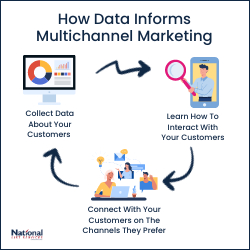
Step one for any campaign is to know your customer. Dig through all your first party customer data to create personas of your target customers. Knowing about your customers will help you figure out what channel they will mostly like to engage through.
It is helpful to give your customers and potentials multiple touch point options. Encourage your customer to sign up for emails, interact on social media, and any other engagement options. The more data you have on your customers, such as email, phone, social accounts, and their address the easier it will be to engage in a way that reaches them.
Next, you can collect data and analytics about your customers from the channels you are using to constantly to learn more about your demographics and your customer’s buying habits. The more channels you use the easier it will be to learn about your customer.
Knowing what channels your customers prefer can save you money. For example, there’s no point in sending your target audience direct mail if you know that’s not a channel that works for them. Therefore, collecting data about your customers can help you lower your CPA and give your faster ROIs.
How are you using data to inform your multichannel campaigns?
Want to learn more about how customer data can help your business grow?
Can You Trust Your Data?

No matter how good the machine you build it is, it’s not going to run well if your fuel is poor quality. Data is the fuel the runs all marketing. The problem is, data error is commonplace. Data providers are all trying to give their clients the best data possible but often the data they are providing doesn’t match up.
Harvard Business Review did a study in May 2020 to test the accuracy of consumer data. They found that the accuracy of Demographic data was particularly disappointing. Most were only around 50% accurate. For example, the average accuracy of gender segments classifying males was only 42.5%.
“Half the money I spend on
– department-store magnate John Wanamaker (1838-1922)
advertising is wasted; the trouble is,
I don’t know which half.”

What do those errors mean for your campaign? A study by Forrester Consulting on behalf of Marketing Evolution in fall 2019 found that “marketers estimate that 21 cents of every media dollar spent by their organization in the last year was wasted due to poor data quality, which translates to a $1.2 million and $16.5 million average annual loss for mid-size and enterprise organizations, respectively.”
How do a few errors on a record level equal so much wasted money? Record level data is the spring from which everything else flows. For a small example, if a few records in your CRM have mistakes in them, what is going to happen when you use them to send an email campaign? The opens and clicks from your email campaign may inform your audience for your social campaign. In every step and trigger along your campaign, the small errors effect more and more information downstream.
The company Truth Set is looking to minimize error across all data. How? By providing a third – party consumer report type service for data providers and marketers. Truth Set goes through every record available and assigns a percentage rating to all the attributes, such as ‘percentage that this record is actually male.’ That way, marketers won’t waste money on inaccurate data and data providers can keep their data clean.

The hope is that as more time goes on, third party quality checks and ratings will become commonplace and shrink margin for error unilaterally.
What can you do make sure your data is accurate? There are a few easy identifiers you can check for. How old is the data? How transparent is the provider with where the data came from? How consistent and relevant is it?
What changes do you think would make it easier for marketers to trust their data?
